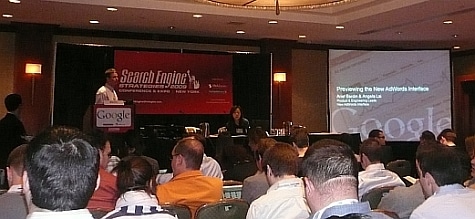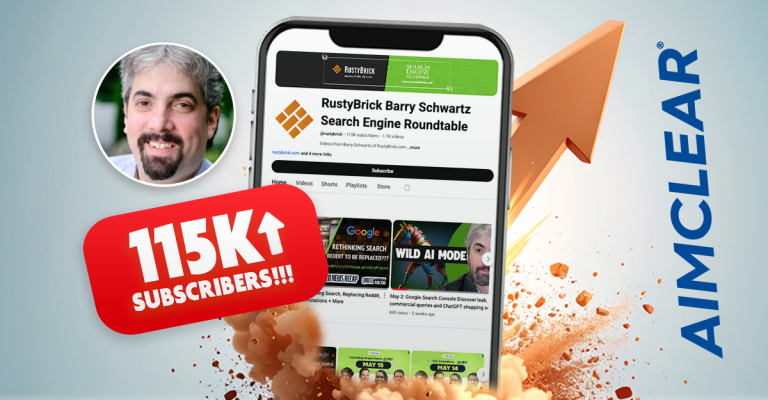
Search engines strive to produce the most up-to-date content and deal with a steadily-raging river of real-time updates. Google has the “show options” feature with the ability to display the most recent content from the past hour. Twitter is constantly in the now. With Facebook & LinkedIn all indexing instant submissions.

Fresh content is is a high priority for search marketers and advertisers as they strive to put their wares adjacent to the happening-now-content searches. This SES Chicago 2009 session was moderated by Barbara Coll, CEO, WebMama.com Inc. Today’s panel features industry experts: Bill Fischer, Co-Founder & Director, Workdigital, Ltd., Rob Walk, Managing Partner, NovaRising, Nathan Stoll, Co-Founder, Aardvark, and Ho John Lee, Principal Program Manager, Social and Real Time Search, Microsoft Bing.
Barbara Coll kicks things off identifying real-time as the hot new topic in the Search community. Keys to success are engaging in the community and providing them with genuine, useful content. Use social media to provide exclusive incentives which creates buzz. Be open to user-generated content. Why not use the outside world to generate content for you? Signs of human life drive traffic.
Up first is Bill Fischer who believes public conversations are something that people like and they’re here to stay. Building tools to aggregate valuable data from the real-time “noise” is where you can make money in this new phenomenon. WorkDigital has leveraged the real-time search stream and indexes the world’s online classified advertising, specifically online recruitment, using semantic technology.
He says search is the biggest opportunity, bar none. Classified advertising is shifting to real-time media as applications and sophisticated programs are becoming available.
Obstacles in the real-time search world are:
- MASSIVE amount of pages, over 1.5 billion
- It’s smaller (updates)
- Language is colloquial
People often put out offers on Twitter, Facebook or LinkedIn to their immediate circle of friends: “I’m looking for a new chef.” Tweets or status updates are often too generic for searching. Only their friends know what they’re talking about, to everyone else it’s just noise. WorkDigital’s system:
- Sees the tweet
- Flags it (looks like a job offer)
- Searches for more data (Looks at other tweets, links they’ve posted, and bio information to turn ultra-micro updates into useful information)
- Turns these into legitimate job postings
Over 400,000 job offers have been put into Twitter. These offers are often put on Twitter or Facebook to circle their friends before they go to HR or other online platforms such as Monster or Careerbuilder.
Next is Nathan Stoll, an ex-Googler, now co-founder of Aardvark. Stoll believes real-time search will matter more down the line than it matters now. Who’s to say what kick-ass tool may be built on top of current programs?
Businesses using social media must realize Twitter and Facebook aren’t strategies, they’re tools. For example: use them to interact with your customers’ complaints or questions. It’s better, easier and faster.
The content from your real friends is always going to matter most, and it’s important to be truly authentic. Trying to spam Twitter for business does not pay off. Have a real relationship with your customers. They want to feel taken care of. They want to know someone is listening.
Next is music indexing and music search via Walk. Rock on Rob.
NovaRising worked with BBC to create Sound Index, a kick-ass music indexing and music search platform. Because BBC is the main broadcasting company they must hit all genres and segments, not just pop-culture tweens. Today it boasts: “the index is made up of 904,107 comments, posts, plays and views from across the web.”
The tool semantically crawls sites such as LastFM, iTunes, YouTube, Twitter etc. and aggregates what people are talking about in real-time, contextual conversations.
For example, Sound Index takes a post referencing “Britney’s new song” the update is bench-marked and correlated with other data to discover which song the user is talking about.
This website looks seriously cool, but currently has limited access. 🙁
Next up Ho John Lee, from Bing, bringing a broader view of search in the real-time space.
What’s real-time search good for? If you’re an optimist, these are case studies of what it could be good for… or proof of our self absorption.
Twitter gives us high volume of quickly generated content which is concise. Its not necessarily accurate or reliable and context is essential to understanding. Who did they reply to? Why? What hashtags did they use? etc.
An interesting property of real-time search: content follows attention. However, if there’s something dramatic going on creation of content will also lead the attention. Social media real-time search is especially useful to find information that is emotional, novel and extremely current where traditional search engines fail.
Another property is the noise: the volume, the sentiment, location etc. In aggregate, noise becomes part of the story.
Real-time search is frequently about discovery , not search per se. What are people talking about and what are they saying?
Now that Twitter offers geo-location it is important for businesses using Twitter to tweet relevant content within the area of its interest and its location.
The panel was opened up to questions next.
How do non-pop-culture companies use these platforms?
Coll: In the B2B world we have a challenge, there are huge opportunities for relevancy. Businesses who use social platforms must attract audience based on relevance of keyword. Many companies can’t risk a brand by open communication, but you have to open yourself up, just be careful to be extremely relevant.
Stoll: There are a lot of opportunities in the tail. We see opportunities (for example) with lawyers getting referrals from friends or answering legal questions. Being connected in that moment can possibly lead to a client’s contract. Think of opportunities as affiliate programs, ie your friend says Cluetrain Manifesto is great! <link>.
If we’re looking for chinese food near the Chicago Hilton what’s available? Will the web ever answer us back?
Lee: No. But we’re getting better at using Twitter or status streams. If you’re an advertiser you don’t know who’s going to bite, but gives you a better idea of who might. Vark provides a particular venue for this.
Stoll: On Vark, you can post a question and Vark will analyze, reach out to your friends and extended networks on your behalf to get this knowledge. There’s a lot of knowledge in people’s heads that isn’t on the web. Vark is like having a 1,000 fold more Twitter friends because it goes to extended friend networks.








